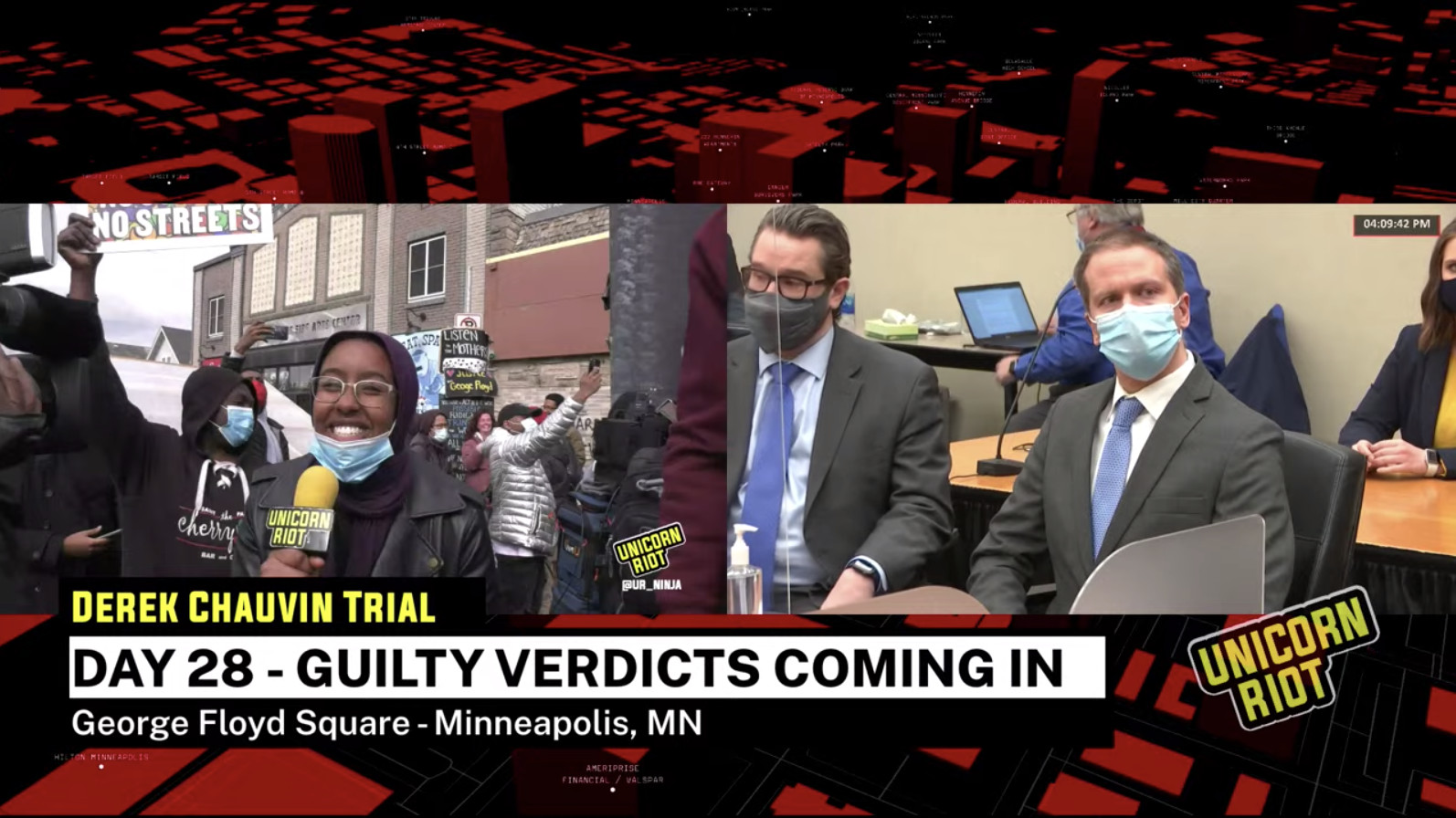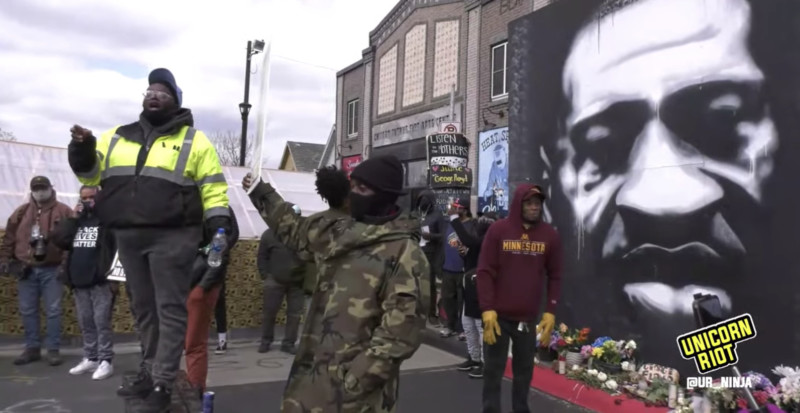Sign up for the daily CJR newsletter.
Among the many browser tabs I toggled between yesterday in nervous anticipation of a verdict in the Derek Chauvin trial were two video livestreams. One showed a static, unfocused close-up of the Minnesota state seal, at the courthouse. The image was quiet, still, neutral-looking, as if the world were waiting in silence for the judge to appear and make a definitive pronouncement of the truth. This video was from the New York Times. The other frame couldn’t have been more different: it was crowded, busy, and filled with noise from protest chants, speeches, and conversation in George Floyd Square, a memorial to Floyd at the site of his death. This video came from Unicorn Riot, a decentralized media collective. The camera, moving from the rally’s speakers to a mural on the wall of Cup Foods to chalk drawings and flowers, never showed a reporter; the camera’s operator spoke only to give bare exposition and interview people at the scene.
Like most major news outlets, Unicorn Riot had streamed from inside the courthouse for the duration of the trial. But alongside that footage it had also provided extensive live coverage of demonstrations. In doing so, it provided an alternative to the picture viewers saw on cable news. In the past year, professional journalists have become more aware of their complicity in police narratives—especially the practice of basing stories on official statements and shrouding police violence in obfuscating language like “officer-involved shooting.” But even as copy style and headlines have changed, the imagery widely shown upon the announcement of Chauvin’s verdict revolved, still, around the activities of the state—the courthouse, the legal actors—and the opinions of media pundits. By contrast, Unicorn Riot’s ongoing presentation of resistance, documented without commentary or narrative shaping, put protest on equal footing with the trial itself. It is of course meaningful that Chauvin was convicted of murder (now, some journalists observed wryly, we can finally use the word “murder” and drop the “alleged”), but it is just as important to show the emotion unleashed within Floyd’s community—relief, grief, celebration, “revolutionary joy.” This is what it looks like to treat coverage of the “official” story as just one story among many.
This article has been updated to correct a description of Unicorn Riot.
Has America ever needed a media defender more than now? Help us by joining CJR today.








